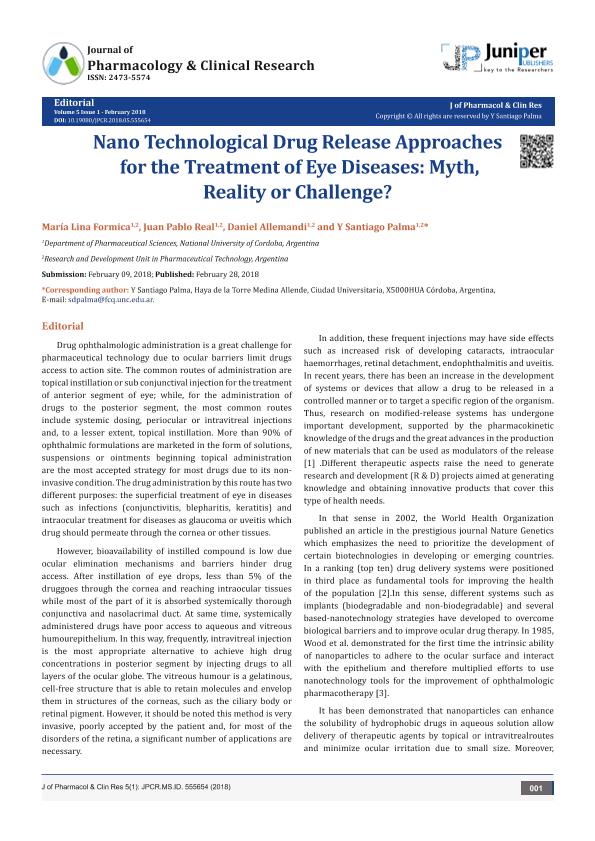Artículo
Nano technological drug release approaches for the treatment of eye diseases: Myth, reality or challenge?
Fecha de publicación:
28/02/2018
Editorial:
Juniper Publishing Group
Revista:
Journal of Pharmacology & Clinical Research
ISSN:
2473-5574
Idioma:
Inglés
Tipo de recurso:
Artículo publicado
Clasificación temática:
Resumen
Obtaining nano carriers capable of transporting antibodies that allow a longer residence time of drug in the vitreous, thus decreasing the frequency of intravitreal injection would be of special utility to improve adherence in chronic diseases such as Age-related Macular Degeneration (AMD) or Diabetic Retinopathy. In the treatment of these diseases, none of the drugs used (anti-VEGF drugs such as Ranibizumab or Bevacizumab) resolves the underlying cause of them, only temporarily eliminates the excessive presence of VEGF in the affected eye. When the drug, due to pharmacokinetic issues, is no longer present at the site of action, VEGF will begin to accumulate until it again reaches excess.This leads to patients receiving injections with a high frequency, something that in practice usually does not occur. The consequence is clear differences in the effectiveness achieved in clinical practice compared to that reported in clinical trials.In this sense, the achievement of nanoparticles able to release sustained anti-VEGF drugs, thus prolonging the VEGF blocking time and therefore the need for re injections, would improve the adherence of these treatments with the consequent improvement of the effectiveness and quality of life of the patients.
Palabras clave:
EYE DISEASES
,
NANO TECHNOLOGICAL
,
DRUG DELIVERY SYSTEMS
Archivos asociados
Licencia
Identificadores
Colecciones
Articulos(UNITEFA)
Articulos de UNIDAD DE INVESTIGACION Y DESARROLLO EN TECNOLOGIA FARMACEUTICA
Articulos de UNIDAD DE INVESTIGACION Y DESARROLLO EN TECNOLOGIA FARMACEUTICA
Citación
Formica, María Lina; Real, Juan Pablo; Allemandi, Daniel Alberto; Palma, Santiago Daniel; Nano technological drug release approaches for the treatment of eye diseases: Myth, reality or challenge?; Juniper Publishing Group; Journal of Pharmacology & Clinical Research; 5; 1; 28-2-2018; 1-3
Compartir
Altmétricas




